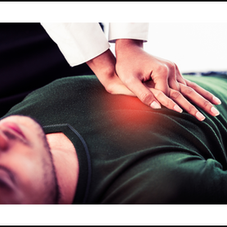"Ensuring Safety in Healthcare: Contact, Bloodborne, Droplet, and Airborne Precautions"
Healthcare settings, such as hospitals and clinics, can pose potential health risks not only to patients but also to healthcare team members and visitors. Preventing the transmission of infectious diseases is vital in maintaining a safe and healthy environment for everyone. There are various precautions that must be taken to ensure the safety of all involved in the healthcare process. These precautions include contact, bloodborne, droplet, and airborne precautions. In this blog, we will discuss each of these precautions and their importance in preventing the spread of infections. Understanding and adhering to these precautions are critical in reducing the risk of transmission of infectious diseases and maintaining a safe healthcare environment.

1. Contact precautions:
The term refers to both direct and indirect exposure to a patient and/or their surroundings, including the individual's room or items that have come into contact with them. This exposure can occur in the context of an infection caused by an organism transmitted through fecal-oral means, such as Clostridium difficile, or through wound and skin infections or multi-drug resistant bacteria like methicillin-resistant Staphylococcus aureus (MRSA).
The CDC mandates the use of Personal Protective Equipment (PPE) consisting of gloves and a gown as a prerequisite for entering a room designated for contact precautions.
If there is a possibility of exposure to bodily secretions, then a mask and eye protection must also be worn in addition to the gloves and gown.
Mnemonic: MRS. WEE
MRSA
Respiratory infections e.g RSV
Skin infections
Wound infections
Enteric infections (C. Dif)
Eye infections (Conjunctivitis)
2. Bloodborne precautions:
Most blood-borne transmission of pathogens occurs through percutaneous injuries, which can be avoided by implementing changes in techniques, leveraging experience, and utilizing safety devices.
As per the OSHA database, HIV, hepatitis B and C, malaria, measles, herpes, chickenpox, and several other bacterial infections can be transmitted through fluids and products that contain blood.
Precautions for blood-borne pathogens involve the use of gloves, a face mask, protective eyewear or goggles, as well as the safe handling of sharp objects followed by their appropriate disposal.
Disposal of sharps must be done in a secure and locked bin that is puncture-proof and approved for "sharp-only" use.
a. All sharps should NOT be re-capped.
b. All sharps should not be bent or broken.
c. Safety devices should be implemented to prevent contact with needles and other sharps.
These measures are applicable to all bodily fluids containing blood, such as cerebrospinal, pericardial, pleural, and peritoneal fluids.
Precautions for blood-borne pathogens are NOT necessary for sputum, vomit, sweat, feces, and nasal secretions unless visible blood is present.
In the event of contact with fluids or products containing blood, it is essential to clean the area with soap and water promptly and gather the patient's bloodborne infection status and vaccination history.
3. Droplet precautions:
Precautions for droplet transmission are required if a patient with an infection caused by a pathogen such as influenza is in close proximity, within a range of three to six feet.
Infections can spread through air droplets when an infected person coughs, sneezes, talks, or breathes in close proximity to others. These droplets typically measure between 30 to 50 micrometers in size.
Whenever possible, patients should be assigned to private rooms.
In addition to standard precautions, personnel should always wear protective surgical masks when coming into contact with an infected patient or their surroundings.
Mnemonic: SPIDERMAn
Streptococcal pharyngitis, Sepsis, Scarlet fever,
Pertusis, Pneumonia
Influenza
Diphteria
Epiglottitis
Rubella
MumpS, Meningitis
Adenovirus
4. Airborne precautions:
Airborne precautions must be taken when entering a room or environment of a patient who has been diagnosed with or is suspected of having anthrax, tuberculosis, measles, chickenpox, disseminated herpes zoster, or other pathogens that can be transmitted through airborne particles that are 5 micrometers or smaller in size and can remain suspended in the environment for extended periods.
Mnemonic: MTV'SS
Measles
Tuberculosis (TB)
Varicella (chicken pox)/ Herpez Zoster (shingles)
SARS (Severe Acute Respiratory Syndrome)
Along with the standard precautions of wearing gloves and a gown, the CDC mandates that every healthcare worker wear an approved N95 respirator mask that is properly fitted.
The CDC highly recommends that patients who have been diagnosed with or are being tested for infectious airborne pathogens be placed in a single room known as an airborne infection isolation room (AIIR). These rooms have negative pressure and are equipped with air filtration systems that provide 6 to 12 air exchanges per hour to minimize the risk of transmission.
Whenever healthcare team members or visitors interact with patients in a healthcare facility, it is crucial to follow the PPE and infection control signs. It is also essential to thoroughly wash hands with soap and water before and after entering a patient's room to ensure both the patient's and their own safety.
Here are some more tips about this topics:
1. Wash your hands (*Most important step in infection control, prevents nosocomial infections) 2. DON gloves (before coming in contact with anything wet, i.e. broken skin, mucous membranes, blood, body fluids, soiled instruments, contaminated waste materials. 3. Wash hands again upon removal of gloves and between patients | |
Airborne Precautions | Before entering: 1.Wash hands 2. Don N95 Respirator (Mask) 3. Don gown then gloves *Negative Pressure Isolation Room KEEP DOOR CLOSED Before leaving pt's room: 1. Remove gloves then gown NOT N95 mask 2. Wash hands After leaving patient's room: 1. Shut door 2. Wash hands 3. Remove N95 mask 4. Wash hands |
used to prevent contact between potentially pathogenic microorganisms and uninfected persons who have seriously impaired resistance. Patients with certain diseases, such as leukemia, who are on certain therapeutic regimens are significantly more susceptible to infections. | |
To pass your Ordre des infirmières et infirmiers du Québec OIIQ-RN Exam go to: www.rn101questionbank.com
To pass your Ordre des infirmières et infirmiers auxiliaires du Québec OIIAQ-LPN Exam go to: www.rn101lpnquestionbank.com
Follow us on Instagram for more free nursing materials: https://www.instagram.com/jimbriant/





















Comments